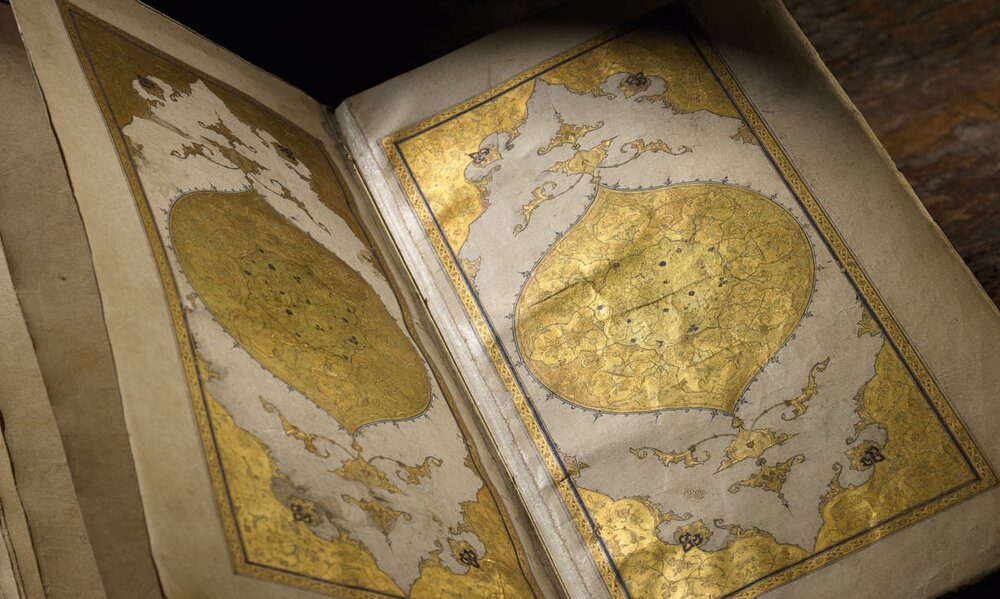Gold-illuminated Divan of Hafez sells for 375,000 GBP at Sotheby’s

TEHRAN – A gold-illuminated Divan of Hafez, one of the earliest copies of the work of the 14th-century illustrious Persian poet, has recently sold for 375,000 GBP in an online auction held in London by the Sotheby's.
The luxurious manuscript of Hafez’s seminal work went under the hammer at Sotheby’s, bringing an end to the dramatic story of the text’s theft and rediscovery. The stolen manuscript was dramatically discovered earlier this year by a Dutch art sleuth.
Illustrated by the calligrapher Shaykh Mahmud Pir Budaqi, the manuscript was part of the collection of the Islamic art collector Jafar Ghazi, who died in Germany in 2007. After his death, his heirs discovered that many of his manuscripts had been stolen, the Guardian reported earlier in March.
“While 175 items were recovered by police in 2011, the Divan was still missing. When a €50,000 (£43,000) reward was offered by German police, it was tracked down in 2019 by Arthur Brand, a Dutch art detective who has previously found a pair of bronze horses sculpted for Adolf Hitler, and a stolen Picasso.”
The magnificent manuscript bears a dedication to one of the most important patrons of the arts of the book in fifteenth-century Central Asia, the Qara Qoyunlu prince Pir Budaq (d.1466). While book production in Timurid Persia dwindled due to conflicts and political instability, other centers of patronage flourished and welcomed artists from all over the region, according to organizers.
Pir Budaq was an important member of this cultural movement and a keen bibliophile. Numerous manuscripts dedicated to him have survived in institutions and private collections today. The current previously unrecorded Diwan is a testament to Pir Budaq’s bibliophile pursuits and an important witness to the grandeur that must have been his library.
Pir Budaq was the eldest son of Jahan Shah (r.1439-67), a Qara Qoyunlu ruler who controlled what is today Azarbaijan early in his career. After the death of the Timurid ruler Shahrukh in 1447, Jahan Shah expanded his reign, conquering Sultaniyya, Hamadan, Qazvin, and later Qum, Isfahan, Shiraz, and Yazd.
Pir Budaq participated in the last military campaigns in Shiraz (1452) and Yazd (1453), and soon after was given the governorship of Shiraz (1456), an appointment that lasted only two years. Due to his rebellious nature and wish for independence, in 1458 Jahan Shah ordered Pir Budaq to move to Baghdad, closer to the capital Tabriz.
Despite the political turmoil, Baghdad became an important cultural center thanks to Pir Budaq, who moved his entire court from Shiraz. The city flourished as a center for manuscript production, the present Diwan a testament to this renaissance.
The auction took place at Sotheby's‘ Arts of the Islamic World & India including Fine Rugs & Carpets’ on June 10, it also included 69 carpet lots and among them Persian, Anatolian and Caucasian rugs and carpets from the 16th-19th century. The sale was originally due to take place on April 1.
AFM/
